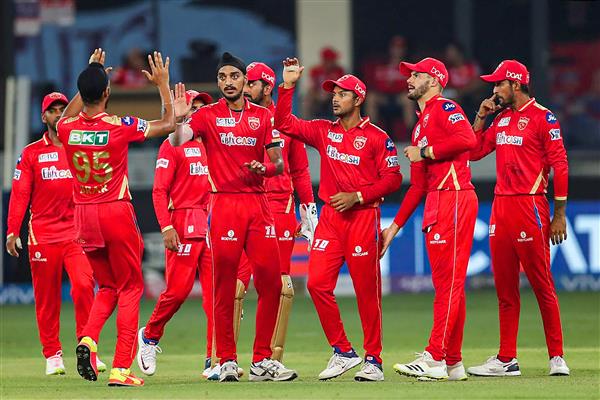International Cricket Council- ICC, History
International Cricket Council- ICC, History
The International Cricket Council (ICC) is the world governing body of cricket. Headquartered in Dubai, United Arab Emirates, its members are 108 national associations, with 12 Full Members and 96 Associate Members. Founded in 1909 as the Imperial Cricket Conference, it was renamed the International Cricket Conference in 1965, and took up its current name in 1987.
The ICC has 108 member nations currently: 12 Full Members that play Test matches, and 96 Associate Members. The ICC is responsible for the organisation and governance of cricket’s major international tournaments, most notably the Cricket World Cup and the T20 World Cup. It also appoints the umpires and referees that officiate at all sanctioned Test matches, One Day Internationals and Twenty20 Internationals. It promulgates the ICC Code of Conduct, which sets professional standards of discipline for international cricket, and also co-ordinates action against corruption and match-fixing through its Anti-Corruption and Security Unit (ACSU).
The ICC does not control bilateral fixtures between member countries (which include all Test matches), and neither does it govern domestic cricket within member countries. It does not make or alter the laws of the game, which have remained under the governance of the Marylebone Cricket Club since 1788.
The Chairman heads the board of directors and on 26 June 2014, Narayanaswami Srinivasan, the former president of BCCI, was announced as the first chairman of the council. The role of ICC president has become a largely honorary position since the establishment of the chairman role and other changes were made to the ICC constitution in 2014. It has been claimed that the 2014 changes have handed control to the ‘Big Three’ nations of England, India and Australia. The last ICC president was Zaheer Abbas, who was appointed in June 2015 following the resignation of Mustafa Kamal in April 2015. When the post of ICC president was abolished in April 2016, Shashank Manohar, who replaced Srinivasan in October 2015, became the first independent elected chairman of the ICC.
History
1909–1963 – Imperial Cricket Conference
On 30 November 1907, Abe Bailey, the President of South African Cricket Association, wrote a letter to the Marylebone Cricket Club’s (MCC, England) secretary, F.E. Lacey. Bailey suggested the formation of an ‘Imperial Cricket Board’. In the letter, he suggested that the board would be responsible for formulation of rules and regulations which will govern the international matches between the three members: Australia, England and South Africa. Bailey, wanted to host a Triangular Test series between the participant countries in South Africa. Australia rejected the offer. However, Bailey did not lose hope. He saw an opportunity of getting the three members together during the Australia’s tour of England in 1909. After continued lobbying and efforts, Bailey was successful.

On 15 June 1909, representatives from England, Australia and South Africa met at Lord’s and founded the Imperial Cricket Conference. A month later, a second meeting between the three members was held. The rules were agreed amongst the nations, and the first ever Tri-Test series was decided to be held in England in 1912.
In 1926, West Indies, New Zealand and India were elected as Full Members, doubling the number of Test-playing nations to six. After the formation of Pakistan in 1947, it was given Test status in 1952, becoming the seventh Test-playing nation. In May 1961 South Africa left the Commonwealth and therefore lost membership.
1964–1988 – International Cricket Conference
In 1964, the ICC agreed upon including the non-Test playing countries. The following year, the ICC changed its name to the International Cricket Conference. The US, Ceylon and Fiji were admitted as Associates, a new class of member.
In 1968, Denmark, Bermuda, Netherlands, and East Africa were admitted as Associates, while South Africa had still not applied to rejoin the ICC.
In 1969, the basic rules of ICC were amended.
At the 1971 meeting, the idea of organizing a World Cup was introduced. At the 1973 meeting, it was decided that a World Cup would be played in 1975 in England. The six Test playing nations and East Africa and Sri Lanka were invited to take part.
New members were added frequently during this period:
In 1974, Israel and Singapore were admitted as Associates.
In 1976, West Africa was admitted as an Associate.
In 1977, Bangladesh was admitted as an Associate.
In 1978, Papua-New Guinea was admitted as an Associate. South Africa applied to rejoin, but their application was rejected.
In 1981, Sri Lanka was promoted to a Full Member, and they played their first Test in 1982.
In 1984, a third class of membership (Affiliate) was introduced. Italy was the first such member, followed by Switzerland in 1985. In 1987, Bahamas and France were admitted, followed by Nepal in 1988.
1989–present – International Cricket Council
At the July 1989 meeting, the ICC renamed itself as the International Cricket Council, and the tradition of the MCC President automatically becoming the Chairman of ICC was abolished.
In 1990, UAE joined as an Associate.
In 1991, for the first time in ICC history, the meeting was held away from England, in Melbourne. South Africa was re-elected as a Full Member of the ICC in July, following the end of apartheid.
In 1992, Zimbabwe was admitted as the ninth Full Member. Namibia joined as an Associate member. Austria, Belgium, Brunei and Spain joined as Affiliates.
In 1993, the position of Chief Executive of ICC was created; David Richards of the Australian Cricket Board was the first person appointed to the position. In July, Sir Clyde Walcott, from Barbados, was elected as the first non-British Chairman. The emergence of new technology saw the introduction of a third umpire who was equipped with video playback facilities.
By 1995, TV replays were made available for run-outs and stumpings in Test matches, with the third umpire required to signal out or not out with red and green lights respectively. The following year, the cameras were used to determine if the ball had crossed the boundary, and in 1997 decisions on the cleanness of catches could be referred to the third umpire. This year also saw the introduction of the Duckworth-Lewis method of adjusting targets in rain-affected ODI matches.
In 2000, Bangladesh were admitted as the tenth Full Member of the International Cricket Council.
In 2005, ICC moved to its new headquarters in Dubai.
In 2017, Afghanistan and Ireland were admitted as the eleventh and twelfth Full Members of the International Cricket Council after a unanimous vote at the ICC Full Council meeting at The Oval. Affiliate Membership was also abolished, with all existing Affiliate Members becoming Associate Members.
In 2018, all Women’s T20 matches were elevated to Women’s Twenty20 International status.
In July 2022, Cambodia, Cote D’Ivoire, and Uzbekistan were granted associate member status by ICC
For more sports related news stay tuned to sportswikiz.com



